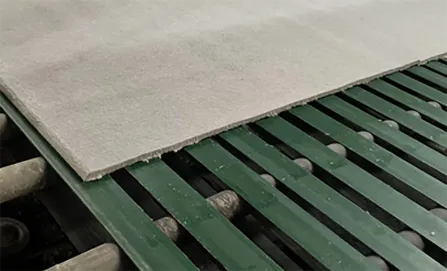Nov . 28, 2024 11:16 Back to list
Choosing the Right Ceiling T-Bar Hangers for Your Installation Needs
Understanding Ceiling T-Bar Hangers Essential Components for Suspended Ceilings
When it comes to modern building designs, suspended ceilings, often referred to as drop ceilings, have become increasingly popular due to their aesthetic appeal and functionality. Among the key components that facilitate the installation and support of these ceilings are the T-bar hangers. This article will explore ceiling T-bar hangers, their purpose, types, installation processes, and benefits, providing you with a comprehensive understanding of these essential tools in ceiling construction.
What are Ceiling T-Bar Hangers?
Ceiling T-bar hangers are structural elements used to support and suspend ceiling grids, allowing tiles to be installed in a level formation below the building's structural ceiling. These hangers provide the necessary strength and stability for the ceiling system, ensuring that it remains securely in place while allowing for easy access to utilities hidden above.
Purpose of T-Bar Hangers
The primary purpose of T-bar hangers is to support the weight of the ceiling tiles and the grid framework that holds them. Additionally, they help to create a gap between the structural ceiling and the suspended ceiling, which is vital for fire safety, acoustic insulation, and access to plumbing and electrical systems. This gap facilitates maintenance and modifications, making it easier to address any issues that arise without having to disturb the entire ceiling.
Types of T-Bar Hangers
There are several types of T-bar hangers available, each designed for specific applications and installation preferences
1. Wire Hangars These are the most common type of hangers used in ceiling installations. Typically made of high-strength wire, they are easy to install and adjustable, allowing for flexible placement as needed.
2. Rod Hangers Rod hangers consist of threaded rods that are secured to the building's structure. They provide additional strength and can be used for heavier ceiling installations or in areas with high foot traffic.
3. Clevis Hangers Clevis hangers are specially designed for suspended systems requiring more substantial support. They have a U-shaped design that can accommodate larger loads and are often used in industrial settings.
4. Strut Channel Hangers These hangers use a channel system designed for greater flexibility in suspending various types of fixtures. Strut channels can accommodate added accessories and equipment, making them ideal for complex ceiling designs.
Installation Process
ceiling t bar hangers

The installation of T-bar hangers is critical to the success of a suspended ceiling system. It typically follows these steps
2. Marking Locations Using a chalk line, mark where the T-bar grid will be installed, taking care to consider the height of the new ceiling.
3. Attaching the Hangers Secure hangers to suitable points on the existing structure using screws or anchors. Ensure that they are even and positioned at regular intervals per building codes.
4. Installing the T-Bar Grid Once the hangers are installed, the T-bar grid can be assembled and hung using the connectors, ensuring that it is level and properly secured.
5. Fitting Ceiling Tiles Finally, ceiling tiles are installed into the grid, completing the suspended ceiling look.
Benefits of Using Ceiling T-Bar Hangers
The advantages of using T-bar hangers in suspended ceiling installations are numerous
1. Versatility T-bar hangers can support various ceiling materials, including mineral fiber tiles, gypsum boards, and more, making them suitable for different environments.
2. Accessibility The design of suspended ceilings allows for easy access to plumbing, electrical systems, and HVAC components, which is essential for maintenance work.
3. Sound Absorption A suspended ceiling can improve acoustic performance in a room by reducing noise levels, making them suitable for offices, schools, and other public spaces.
4. Aesthetic Appeal T-Bar hangers allow for a clean, finished look that can enhance the overall aesthetic of a space. They enable creativity in ceiling design, accommodating various styles and finishes.
In conclusion, ceiling T-bar hangers play a crucial role in constructing suspended ceilings. Their versatility, ease of installation, and ability to support design creativity make them a valuable component in any construction project. Understanding their purpose and types can lead to better planning and execution of ceiling installations, ensuring a strong, functional, and visually appealing solution for any building.
-
Durable Ceiling T Grid Systems | Easy InstallationNewsAug.29,2025
-
PVC Gypsum Ceiling: Durable, Laminated Tiles for Modern SpacesNewsAug.28,2025
-
Pvc Gypsum Ceiling Is DurableNewsAug.21,2025
-
Mineral Fiber Board Is DurableNewsAug.21,2025
-
Ceiling Tile Clip Reusable DesignNewsAug.21,2025
-
Ceiling T Grid Modular DesignNewsAug.21,2025







